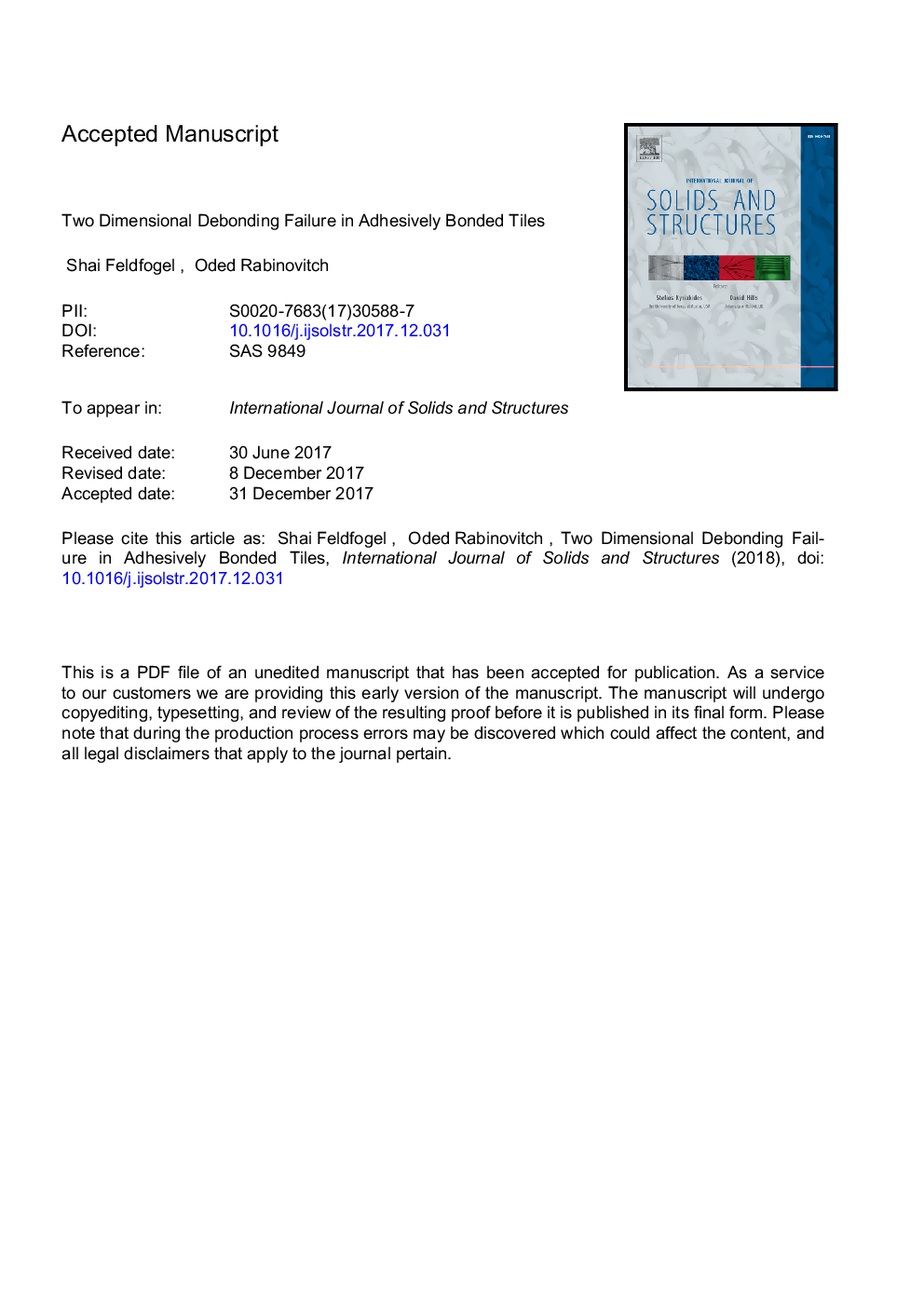| Article ID | Journal | Published Year | Pages | File Type |
|---|---|---|---|---|
| 6748214 | International Journal of Solids and Structures | 2018 | 55 Pages |
Abstract
Adhesively bonded tiling systems are extensively used in numerous applications. The most common, and critical, failure mechanism of such systems is interfacial debonding, which might precipitate the falling of tiles. Modeling the evolution and propagation of this failure mechanism presents considerable analytical and computational challenges. The present work aims to face the manifold challenges involved in analyzing the failure mechanism, using a specially tailored multi layered plate model and a corresponding triangular finite element. Following an introduction and the derivation of the methodologies, a numerical example considers the evolution of debonding failure in building-type tiling systems under thermal loading. Special attention is given to the geometrically irregular propagation of the debonding mechanism, to the stability (and instability) characteristics of the process, and to the effects of different tile geometries on the nature of the response. The results show that at a critical load, the system invariably snaps, and the debonding mechanism becomes unstable. This phenomenon is looked into by examining equilibrium paths, interfacial peeling traction distributions, and displacement fields, which shed light on the unstable nature of the problem from a qualitative, as well as a quantitative, point of view.
Related Topics
Physical Sciences and Engineering
Engineering
Civil and Structural Engineering
Authors
Shai Feldfogel, Oded Rabinovitch,
